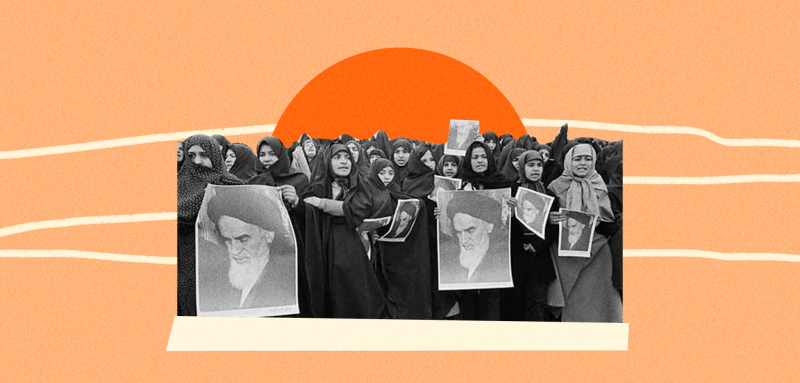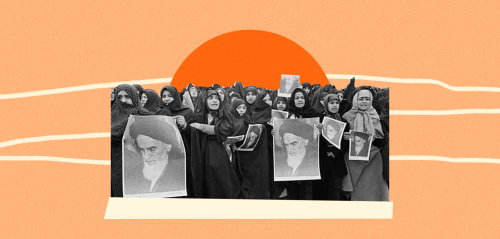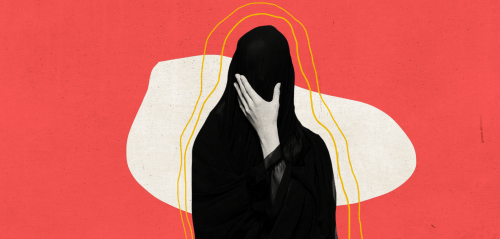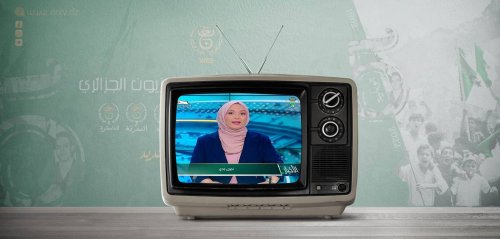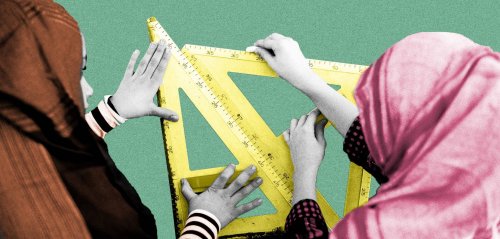A series of events took place in Iran that led to the passing of the law banning the headscarf across the country in 1936 during the reign of Reza Shah. At the time, Iranian women became strictly prohibited from wearing the hijab and all scarves altogether.
building a modern Persian state was the responsibility of Reza Shah. The "forceful" military man aimed to bring about rapid political, social, and cultural changes in a conservative society that was not prepared for such a drastic transformation.
The Shah initially requested a unified dress code in the country, as he disliked the multitude of clothing styles influenced by various cultures and ethnicities, including Persian, Turkish, Kurdish, Baloch, Arabic, and Turkmen. The Shah believed that a unified dress code, inspired by European suits, would portray Iran as fully advanced.
The unified dress code, along with the famous "Pahlavi hat" named after the Shah, became a strictly enforced law. Simple citizens and passersby were fined for not adhering to the royal law approved by the National Assembly, while religious figures and clergy were exempt from the law.
The Shah's wife, daughters, and the wives of ministers and deputies attended the celebration without the headscarf. Reza Shah gave a speech saying women are half the population and must participate in social life, which can only be done by removing the hijab
In 1934, the Shah visited Turkey and got acquainted with its modern republican system under the leadership of Mustafa Kemal Atatürk, and his actions and decisions. He was impressed by the Turkish president and his progressive vision. This caused the Shah to lose confidence in himself and he told the Iranian ambassador in Istanbul, "We are still lagging behind, and we must take immediate full measures for the rapid progress and advancement of citizens, especially the segment of women in the country."
It was evident that the unified dress code law did not satisfy the Shah. He decided to expedite matters and started discussing women's hijab in the government, considering it as an obstacle to women's development and that of the country. The government aired advertisements and propaganda campaigns to prepare public opinion for the removal of the headscarf. Meetings were held, conversations took place, and women's rights activists wrote in their newspapers and magazines.
A new decision
According to the memoirs of the prince: "(The Shah) wanted to follow the policies and actions of (Mustafa) Kemal Pasha and Turkey, particularly the removal of the headscarf, meaning that the removal of the chador will take place sooner or later...".
At the time, Iranian women wore a complete hijab with a burqa, concealing everything, and sometimes they used the chador instead, similar to the Arab abaya. The chador was in the form of a half-circle open at the front, with no openings for the arms, so it covered the face instead of the burqa, leaving only the eyes and nose visible.
In 1935, the Women's Association was established, headed by the Shah's daughter, under the supervision of the Ministry of Education, with the aim of planning for the removal of the hijab. Women's rights activist Sediqeh Dowlatabadi, who was part of the association, wrote, "On that day, I had the honor of organizing a meeting attended by His Majesty the King, his wife, and his two daughters, Princesses Ashraf and Shams. The Shah opened the session with special discipline, with the participation of government members and teachers in the unified dress code. I was seeing my seven-year-long hopes and effort finally come true."
The decisions of the meeting were issued by the Ministry of Education, including organizing womens' celebrations without the headscarf inside schools, handing over the management of elementary education to women, and the necessity of forming mixed classes for males and females up until the fourth grade.
Suppression of religious figures
The clergy in the religious city of Mashhad in northeastern Iran protested, and the Shah's soldiers suppressed their gathering at the Goharshad Mosque. Some religious scholars were arrested, and most of those who organized the meeting and called on citizens to rise against the Shah hid inside the country or fled to the cities of Najaf in Iraq or Herat in Afghanistan. As for the detainees, they spent long periods in prison or faced the death penalty.
The clergy protested in northeastern Iran, and the Shah's soldiers suppressed their gatherings. Some religious scholars were arrested, while others hid inside the country or fled to Iraq. Those arrested spent long periods in prison or faced the death penalty
The Shah then went to the religious city of Qom, located south of the capital Tehran, and sternly confronted the religious scholars regarding his decisive decision against the hijab, so as not to create an impenetrable barrier against the advancement and progress of the country.
In the early months of 1936, the National Assembly approved the law on unveiling, turning what was once the Shah's decision into an official law in the country that had to be implemented across all segments of society. Then the government announced a celebration of this occasion.
The Shah's wife, daughters, and the wives of ministers, officials, and deputies participated in the celebration without wearing the headscarf. Reza Shah delivered a speech emphasizing that women constitute half of the country's population and must participate in social life, and this can only be achieved by removing the headscarf. He stated, "A woman's virtue has nothing to do with the hijab, but rather lies in her spirit and morals, and not in the veil she wears."
No services for veiled women
The government banned the use of the hijab in all its forms. The Ministry of Education prohibited veiled teachers and students from entering schools, and prevented veiled women from acquiring any services in government departments throughout the country.
Veiled women were not allowed to shop or ride in cars, and stores were prohibited from selling them any goods. The police strictly enforced these measures, even going so far as to enter homes and search for scarves or abayas. If any such items were found, they would be torn apart or confiscated.
The government prohibited veiled teachers and students from entering schools. Veiled women weren't allowed to shop, ride in cars or acquire services in state departments. The police strictly enforced these measures, even raiding homes to search for scarves
The police focused on unveiled women to limit and prevent any harassment from occurring at the hands of others.
The government intensified its propaganda to remove the headscarf and launched a wave of media campaigns against veiled women, causing many of them to seclude themselves. Some attempted to maintain Islamic dress by wearing long coats, neck scarves, and large hats that covered all their hair.
The streets became devoid of women, and the law on the hijab remained strictly enforced until the end of the reign of Shah Reza Pahlavi in 1941. Following the Second World War, the British and Russian forces exiled the Iranian Shah, who had shown sympathy for Germany's Hitler, and his young son, Mohammad Reza, took his place.
The era of Iranian women's independence in their attire
Veiled women returned to the streets and resumed their social lives without any police interference. Gradually, many men and women began to rebel against the enforcement of the law to remove the headscarf, leading the Shah to repeal the law in 1944 at the request of the religious scholars.
After that, Iranian women became independent to choose their own clothing style and hijab. Society witnessed moderation in the streets, moving away from the two opposite extremes of the scholars and the Shah, between religion and democracy. This went on for four decades, until 1983, during which society became accustomed to seeing women with or without the hijab, as the law sought to guarantee the rights of all.
In 1944, Iranian women became independent to choose their own clothing and hijab. Society witnessed moderation in the streets, moving away from the two opposite extremes of the scholars and the Shah, with the law seeking to guarantee the rights of all
The victory of the Islamic Revolution against the monarchy came in early 1979, and its leader, Ayatollah Ruhollah Khomeini, agreed to impose the hijab months after the establishment of the Islamic Republic system. He stated, "Muslim women must wear the Islamic hijab and not adorn themselves. Female employees should continue their work in their previous appearance, and they must reform themselves... Women can work and participate in social matters, but with an Islamic hijab."
Clashes between women over their rights
Many women opposed Khomeini's speech in protests calling for the freedom to wear the hijab, while veiled women marched, calling for the enforcement of the hijab. Streets in Tehran witnessed clashes between supporters and opponents of the hijab.
"Fifteen thousand women held a meeting at the Faculty of Engineering at Tehran University, and after voting, they decided to march towards the Prime Minister's office in protest. They were accompanied by a group of men. The women chanted, 'We are against tyranny' and 'We don't want compulsory hijab'." This is how the newspapers reported the details of the demonstrations.
Shortly after, a revolutionary clergyman and the first Friday prayer preacher in Tehran, Ayatollah Mahmoud Taleghani, made a statement opposing Khomeini's position, saying: "We do not object to women working, and no one has said otherwise. Women are active members of our society. Islam, the Quran, and religious authorities seek to preserve women's character. There was no forced imposition. Who ordered women to participate in demonstrations with or without the hijab? Rather, each woman acted according to her sense of responsibility. Their wearing of headscarves was not by force."
In recent years, women began to publicly voice their dissent against the headscarf, leading to the emergence of the "Woman, Life, Freedom" movement after the death of Mahsa Amini at the hands of the morality police
Taleghani passed away, and contrary to his promises, a law imposing the hijab was enacted in 1983, accompanied by provisions in the Islamic Penal Code regarding non-compliance with the hijab in public spaces. This time, shop signs read, "We apologize for not serving customers who do not adhere to Islamic affairs."
The police and revolutionary forces confronted women without the hijab, and state media began writing and broadcasting reports and programs highlighting the importance of the hijab and criticizing unveiled women.
After forty years of women's independence and freedom in wearing the hijab in Iran, it was reimposed on women for another forty years. However, in recent years, women have started raising their voices publicly in opposition to the headscarf, leading to the emergence of the "Woman, Life, Freedom" movement after the death of Mahsa Amini at the hands of the morality police in the streets of Tehran in 2022.
Following the protests, Iranian authorities intensified their crackdown on women who decided to remove their headscarf. The authorities continue their policing and constitutional efforts to limit the phenomenon of the optional headscarf. Despite increasing the presence of hijab patrols in public places such as airports, stations, buses, metros, halls, complexes, and venues, they are attempting to pass a law that further restricts the legal boundaries for women and denies them access to public and governmental services.
Socially, many scholars and academics rejected the futile efforts of the authorities. Among them was Dr. Mohammad Khodayarifard, a psychology professor at Shiraz University, who responded to the authorities' decisions by saying, "The Islamic Republic will not be able to enforce the hijab and confront the 'Woman, Life, Freedom' movement."
Raseef22 is a not for profit entity. Our focus is on quality journalism. Every contribution to the NasRaseef membership goes directly towards journalism production. We stand independent, not accepting corporate sponsorships, sponsored content or political funding.
Support our mission to keep Raseef22 available to all readers by clicking here!
Interested in writing with us? Check our pitch process here!
